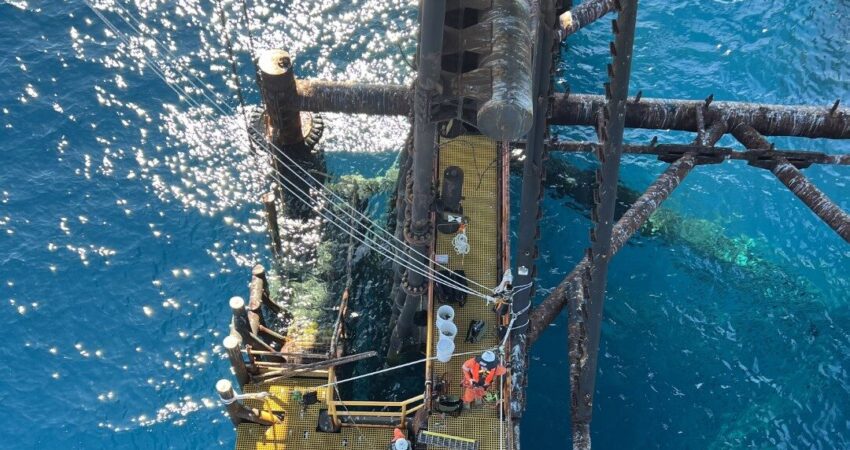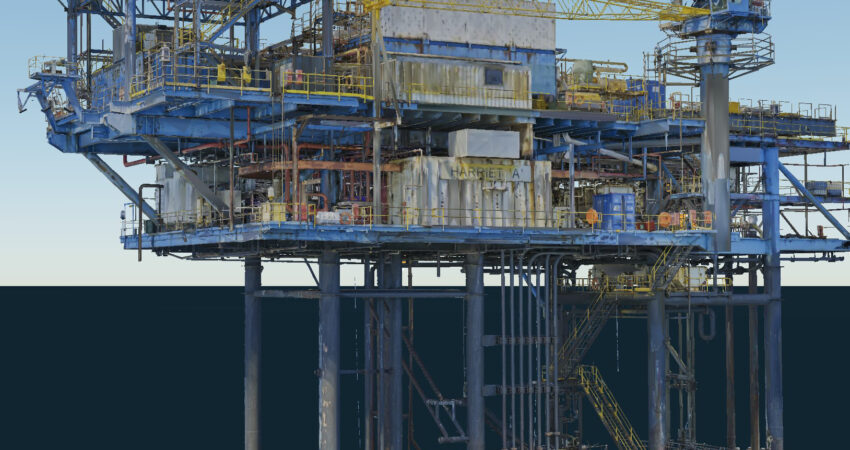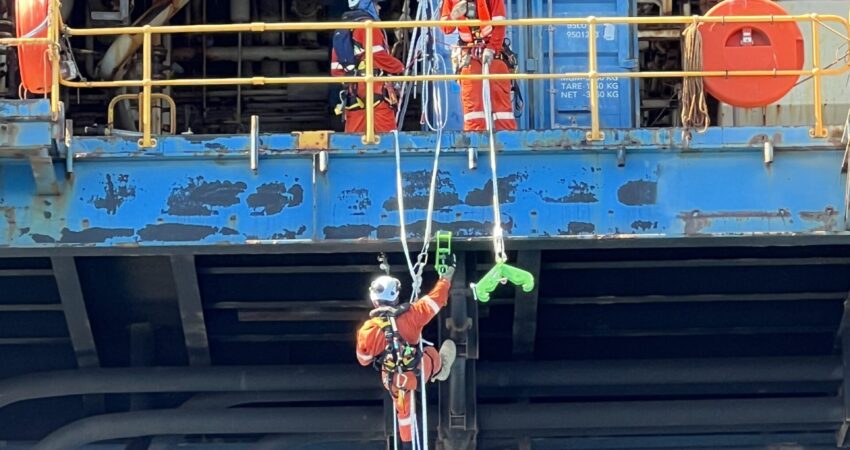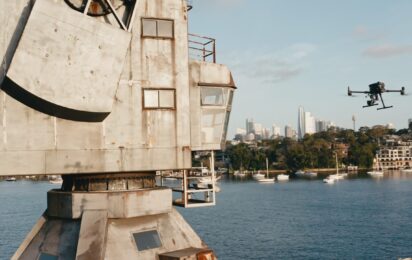As the country’s oil and gas projects reach their end of productive life, a decommissioning industry is taking shape, presenting both opportunities and challenges for stakeholders everywhere.
Australia’s offshore oil and gas industry dates back to 1907 when the first oil well was drilled in the Port of Albany, Western Australia. The sector took off in the 1970s after large deposits were found off the north-west coast.
While oil and gas has been integral to Australia’s economy, the offshore industry has matured, and traditional oil and gas operations are reaching their end of productive life. As the country reduces its emissions, the decommissioning of offshore infrastructure is becoming increasingly important.
What is decommissioning?
Decommissioning refers to the dismantling and removal of infrastructure that was previously used to support oil and gas operations. Once production has ceased, a number of activities need to take place so that the area is left in a safe and environmentally acceptable condition. These include:
- Secure plugging of wells
- Removal of pipelines and flow lines from the ocean floor
- Dismantling of steel embedded in the ocean floor
- Removal of floating production facilities
- Transportation of materials to ports and dismantling yards
- Recycling of steel, plastics and other materials
- Sorting, treating and disposal of waste materials
Phases of offshore decommissioning
Planning
Planning for decommissioning should occur over the life of the project. The process includes:
- Developing an appropriate closure strategy
- Planning documents with the National Offshore Petroleum Safety and Environmental Management Authority (NOPSEMA)
- Procuring appropriate resources and vessels
Offshore decommissioning
Securing offshore oil and gas wells through plugging and abandonment is the largest component of decommissioning, representing 40 to 50 per cent of costs. Each facility contains numerous wells and other infrastructure, including well heads, gathering lines and risers to take product to the surface. To be safely secured, a specialist facility, like a drilling rig, and other vessels are required.
Preparing platform infrastructure for decommissioning and lifting pipelines to the surface often involves the use of floating cranes, heavy-lift vessels, support vessels, barges and tugs. This work also includes categorising the material so it can be appropriately handled and stored onshore.
Transport to onshore facility
Once infrastructure is removed, it is taken to shore for dismantling. This may require deep-water access, large areas of lay-down and hardstand, and areas to store waste. Road or rail transport is needed if transferring large volumes of steel or concrete to be recycled.
Onshore processing
Once decommissioned material is onshore, any hazardous waste, such as naturally occurring radioactive materials (NORMs), asbestos or plastic, needs to be stored and transported out of port areas. Cooperation with the transport, waste and recycling sectors is crucial to ensure port areas do not become congested.
The roadmap
There are more than 1,000 oil and gas structures in Australian waters. The Australian Petroleum Production and Exploration Association (APPEA) estimates that decommissioning these facilities could cost more than $50 billion over the next 30 years.
The federal Department of Industry, Science and Resources is developing a roadmap that will help government, industry, workers and the community build capability. The roadmap aims to ensure that all activities are safe, cost-effective and environmentally sound. Planning for processing, recycling and repurposing the infrastructure are also part of the roadmap.
The opportunities
Economic transformation
Offshore decommissioning is set to boost the economy as we move towards net zero emissions by 2050. Companies specialising in decommissioning stand to benefit from the increase in projects, while regional areas and investment in Australian businesses are also likely to reap the rewards.
Job creation
Opportunities for the existing offshore workforce and those in related industries are likely to increase. Decommissioning activities would also attract new workers to engineering, environmental science, logistics and project management.
Individuals stand to benefit from training in the latest techniques and environmental standards. The industry would support action to enable participation for women, Aboriginal and Torres Strait Islander peoples, and those who are underrepresented in oil and gas.
Environmental rehabilitation
The environmental benefits of compliant decommissioning would include the removal of pollutants and the restoration of marine habitats. Sustainable practices, such as repurposing decommissioned infrastructure for renewable energy projects, are also set to be a focus.
Technological advancements
An established industry provides opportunities to advance and implement the latest technology, such as robots and remote-operated vehicles (ROVs), while improving efficiency and safety.
A best-practice exemplar
Regulatory frameworks are to reflect international best practice and ensure existing regulations are fit-for-purpose. This provides an opportunity for the country to become a leader in the field and set global benchmarks.
The challenges
Financial impacts
Costs for the decommissioning of offshore projects often run into the billions. This is obviously a burden for service providers, especially smaller operators.
Competition for resources
The global nature of the oil and gas industry and the increasing rate of construction for offshore renewables have resulted in the contracting of vessels and crews becoming increasingly complex. Projects are competing for a small pool of vessels, drilling rigs, support craft and workers.
Protecting the environment
Increased awareness of potential environmental impacts has led to greater scrutiny of decommissioning practices. Environmental plans, risk assessments and stakeholder consultation are vital to ensure marine ecosystems are protected.
Regulatory compliance
The Australian government has strict requirements for decommissioning activities. The Offshore Petroleum and Greenhouse Gas Storage Act 2006 is a cornerstone of this framework, mandating that companies restore sites to their original condition.
Technical complexity
Decommissioning is technically demanding, requiring specialist skills and equipment to remove offshore structures. Some existing assets have not been designed with this in mind so innovative engineering solutions and new technologies are crucial.
Looking to the future
As the number of decommissioning projects increases, the industry’s future looks promising. Ensuring that decommissioning activities are conducted safely and with minimal environmental impact will be key to the industry’s success, so new technology and sustainable practices will be crucial.
To facilitate this, collaboration among stakeholders, including oil and gas companies, service providers, regulators, environmental groups and government agencies, is also essential. Such an approach will ensure the development of solutions that address challenges and maximise opportunities.
Duratec’s role
With the capability and expertise to deliver all services involved in decommissioning, Duratec’s wholly owned subsidiary WPF is one of the organisations leading the industry’s advancement. WPF’s services include preworks surveys, access design, pre-works to platforms, plugging and abandonment, and removal of platforms and substructure.
This suite of services, combined with a commitment to the safety of its workers and the environment, sets up WPF for a successful, long-term presence in the offshore decommissioning industry.
Learn more at www.wpfduratec.com.au.







